Despite losing two workdays to snow, Juan-Sí González, a Cuban-born international artist, has created an installation for the Burnell R. Roberts Triangle Gallery with the help of Sinclair Community College students.
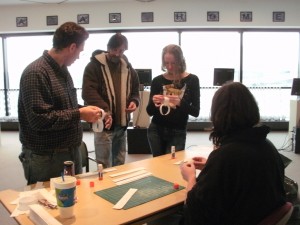 Students collaborate
Students collaborate
González said approximately 20 students spent two months helping him gather information, video and materials for the installation. He said there were difficulties at times due to conflicting schedules, winter weather and Christmas break.
“I think it’s very particular because this is my first experience in the USA working with students,” he said. “All of those people were very enthusiastic to work with me.”
Thomas Miller, a Visual Communications student, got involved when his drawing instructor told him about the paper chain questionnaire.
“I ended up grabbing a bunch of papers and having friends fill them out,” Miller said.
González worked with students through the Visiting Scholars Program. Associate Professor Kay Koeninger wrote the grant that funded his visit to Sinclair.
“He is originally from Cuba, and Cuba will become the next ‘hot’ global art hub,” Koeninger said via e-mail. “He is internationally known and it will be a invaluable experience for our students to work with him.”
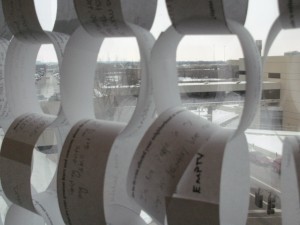 Installation art
Installation art
Installation art is a collection of pieces created specifically for the gallery it is shown in, according to Gallery Coordinator Pat McClelland.
“It’s sort of a confusing medium for people who come expecting more traditional painting and sculpture,” McClelland said.
Because an installation piece is designed and built specifically for the gallery it is shown in, it cannot be fully recreated anywhere else. McClelland believes witnessing this exhibit is a unique opportunity.
Visual Communications student Drew McPherson, who helped glue paper chains together, said he wasn’t sure what to make of the installation yet.
“It’s an interesting concept, but I have yet to determine (what it is),” McPherson said. “It’s interesting.”
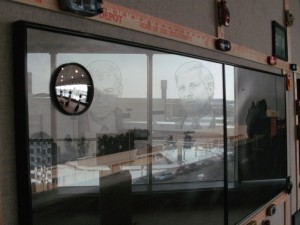 Interaction and interconnectivity
Interaction and interconnectivity
One of the most consistent themes in the installation is interconnectivity. González said that when the economic crisis hit the United States, it hit everyone.
“It’s not like years ago when you have a recession and it’s just your country,” he said.
A mirror is used on some of the pictures on the wall as a symbol of the viewer’s connection with the art around him.
“When you see the mirror, you see your face,” he said. “You are a part of this. You can see the installation, too.”
Viewers of the gallery will be encouraged to bring canned food and pennies to be used as part of their interaction with the evolving installation. Canned goods will be used to create a structure around photos on the floor while pennies will be collected in jars located on the walls. González plans to donate all collected items to those in need.
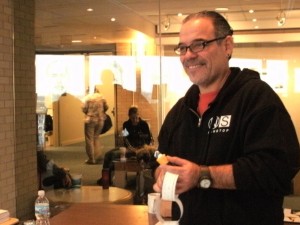 “America en casa”
“America en casa”
González used a variety of media to create the installation titled “America en casa” (“America at home”). Though there are a few focal themes like interconnectivity and the role of the car in society, González declined to share his thoughts regarding the meaning behind those themes.
“I don’t want to talk too much about the real point of the show,” he said. “I prefer that students come, see and discover.”
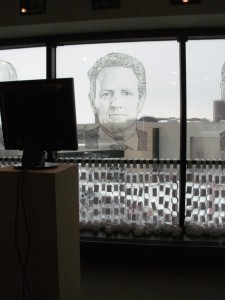 One part of the installation features eight monitors playing videos toward eight portraits of people González believes have a responsibility in the recession, such as former CEO of General Motors Rick Wagoner and former CEO of Bank of America Ken Lewis. People featured in the videos will talk about their current situations and how the recession has affected them. Steven Powers, the president of the art club, helped tape interviews of more than 40 people.
One part of the installation features eight monitors playing videos toward eight portraits of people González believes have a responsibility in the recession, such as former CEO of General Motors Rick Wagoner and former CEO of Bank of America Ken Lewis. People featured in the videos will talk about their current situations and how the recession has affected them. Steven Powers, the president of the art club, helped tape interviews of more than 40 people.
“I think most people were afraid someone would know them,” Powers said. “I just assured them it was anonymous … and people poured their heart out.”
Morgan Bates, a fine arts model, likes the installation’s concept.
“I think it’s wonderful,” Bates said. “It covers the entire Dayton area and it shows just how far downhill we’ve gone and how much things need to change.”
